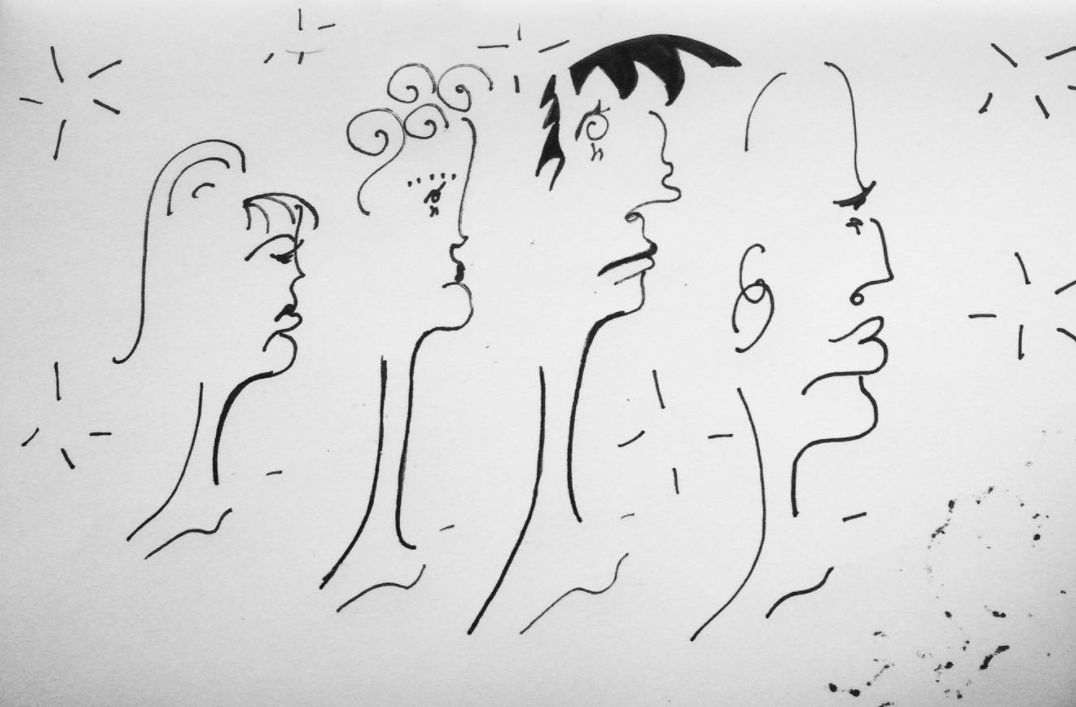When I was a teenager, I was taught that the outfits created by a small coterie of fashion designers set the trends for the upcoming season. The prevailing theory at the time was that the styles displayed on the catwalks of Paris and London, New York and Milan would dictate Britain’s fashion for the next few months; that these outlandish (and expensive!) creations would trickle down to the high street stores in a more palatable, affordable and practical form. There are obvious flaws in this programmatic view of fashion – just think of influential subcultures, historic movements like the Swinging Sixties, even the potential for popular culture to sway fashion. But, more or less, it proved truthful for many years. The road from exclusivity to mass market was pretty straightforward. High fashion dominated. Street style did not.
But then social media happened. And although it’s still possible to notice the filtering of high-end fashion designs into widely accessible stores like H&M – I looked through 2014 issues of Vogue recently (a.k.a. high fashion’s veritable bible) and it’s certainly not lost its power for predicting trends based on Fashion Week – the process is definitely much more complicated than it was a mere ten years ago.
Back before the rise of Instagram and the ubiquitous fashion blog, the power to shape mainstream fashion was limited to a small group of dedicated professionals. Designers, stylists, maybe a journalist or two. (Anna Wintour springs to mind) The chances of a fashion-minded, creative teenager actually cracking the upper echelons of influence were pretty slim. But the Internet changed all that. Through the wildly popular medium of ‘the fashion blog’, a normal person could share their outfits and get thousands of hits; could write enthusiastically about their own burgeoning style and garner as much attention as the most well-informed fashion insider. Susie Bubble, one of the first to capitalise on this brand new format back in 2006, currently has over 326,000 followers on Instagram. It clearly worked.
Although the fashion landscape is undoubtedly different today, this democratisation of style is still going strong. People want fashion that fits the current mood – more inclusive, more diverse and a little bit less rigid. People want fashion for all different shapes and sizes and types; a shift that the high fashion industry is slow to understand and even slower to enact. I’ve been an avid reader of fashion magazines for several years now and although the glossy pages are beautiful to look at, they seem much more fantastical and aspirational than fashion really should be. Although the age of Vogue’s average reader is well into their 30s and apparently 93% of its subscribers own a piece of luxury fashion – guilty! – I have to ask, in what world does this average reader actually earn enough to fork out over £100 for a plain t-shirt?
High fashion commands more real influence than a lot of people realise; this year’s droopy Valentino smock is probably next year’s Topshop maxi skirt. But what democratic fashion possesses that high fashion can’t hope to achieve is the power of persuasion. Who can honestly say that they haven’t jealously eyed up a friend’s outfit or surreptitiously tried to commit a stranger’s look to memory? Although the clothes that you admire might be adapted from a Parisian designer’s signature look, you won’t buy it because of its original iteration; you’ll buy it because someone you know looked great in it. Which is, if you think about it, the very definition of street style.
Written by Rachel Walker.
Illustration by Lara Delmage.

